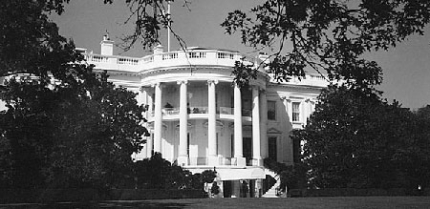 A better gift is not available; two young girls wrapped in the Assyrian flag colors present a plaque in brass as a tribute to Ninos Aho’s lifelong efforts for his people. The painting is made by the artist Afram Azri. Photo: Hujådå
A better gift is not available; two young girls wrapped in the Assyrian flag colors present a plaque in brass as a tribute to Ninos Aho’s lifelong efforts for his people. The painting is made by the artist Afram Azri. Photo: Hujådå
Mention the name Ninos Aho and there are few among the Assyrians in all factions who do not recognize him or relate to this name in any way. He has had a hand in most events over the past 40 years. He helped establish the first Assyrian choir in Qamishli, whose members are now behind 35 new choirs around the world. He was the first person to call his children Zalge, Rumrama, Dilmon and Enlil. Today there are hundreds of Assyrian children who bear those names. He was the first who returned to Syria from a wealthy life in the United States and forced himself and his children to completely alter their lifestyle. In short, Ninos Aho is one of the best known and acclaimed pioneers of the modern Assyrian Movement.
The Assyrian movement began its national struggle a few years after the Assyrian Democratic Organization, ADO, had been formed in the Assyrian town of Qamishli in northeastern Syria in the late 1950s. The Assyrians saw themselves forced to defend their ethnic and cultural identity when pan-Arabism was becoming stronger and threatened to assimilate the non-Arab minorities. Enthusiasts like Ninos Aho came to play a key role early, their young age in spite. They began to promote Assyrian culture by for example encouraging the creation of music and poetry in the Assyrian language. The church had until then banned all kind of song in the language which it regarded as sacred. The west-Assyrians were therefore referred to their neighboring languages to sing and dance at their weddings and parties. But now the young enthusiasts in the ADO had decided that it would change.
Ninos was given the mission to contact a music teacher who had been dismissed from his job as a Scout leader by the authorities. An Arab named Hassan al-Turk had been assigned his job and the unemployed Assyrian music teacher, who was also a composer, was disappointed with his people and disillusioned. His name was Paul Mikhael and he is now a priest in Lebanon. Ninos Aho was sent to ask Paul Mikhael whether he could form an Assyrian choir. Late in the evening on a rainy Thursday in 1968, Ninos rings on the door and presents his case to the reluctant music teacher, who in an attempt to get rid of the young Ninos makes an absurd demand: That Ninos within two days has to gather 40 girls and 40 boys. At the agreed time two days later, all 80 choir members were neatly arranged in the church. This laid the foundation for today’s successful Assyrian folkmusic, whose king Habib Mousa also was recruited by Ninos Aho, who discovered a wonderful voice of a teenager in the church. The church choir was also present at the recording of the new hit songs Kmisawri lquli, Shamo mar and other songs.
Ninos Aho has himself written poetry in both Assyrian dialects, which he masters perfectly. They have been widely spread since his poems have been recorded on tape with his authoritative voice. A large number of his poems have also become popular classics among Assyrian songs, like Zabne u Dore, Gerke Shamo, Shemsha d-Shrara, Me-admi u mu-basraydi and others. His cousin Ninib Ablahad Lahdo’s smooth voice has shown to fit well to reinforce the powerful lyrics.
Ninos Aho has hence been a pioneer of Assyrian cultural life but also active in political activities within the community. His network within Assyrian organizations of different kinds is among the largest one can have. Ninos Aho is a unique Assyrian character because he always manages to put himself in respect by both friends and opponents. How is it possible? The explanation is that he has been so honest in his intentions and he has kept a straight and consistent course through all the years. No one can accuse him of being adaptable or temporizing. Unfortunately there are too many temporizing personalities among our people, like there are among other ethnic groups as well. The difference is that we as a people lack the control mechanism to safeguard the vital interests of our nation. Therefore, individuals who are stable when the political winds blow hard have a major impact on the survival of such a vulnerable nation.
Specifically a control mechanism is the recipe that Ninos Aho wants to prescribe for the Assyrians people in order to survive and reach the ultimate goal of an own homeland. He argues that Freidon Atoraya’s manifesto for a free Assyria around our old capital of Nineveh will become a reality in 2050. That Ninos Aho comes with a prophecy of this kind can be seen as a stimulus that can lead to the prophecy becoming self-fulfilling. Although he refers in his speeches to the biblical prophecies concerning Assyria’s resurrection, there are many who believe that even the ancient prophecies were intended to mobilize their people.
“If you read the Bible as a historical text, the prophets often appear as advisers to the monarchs. The prophecies had many times the nature of political propaganda. They focused on the impending war, or on the legitimacy of the ruling dynasty“ writes for example Göran Eidevall in the journal Forskning & Framsteg
[1] (Research & Progress).
Let us designate the year 2050 as a target for a separate homeland, says Ninos Aho, but the path is lined with a series of milestones. One of them is that Seyfo, which has shaped our people’s identity in the last hundred years and driven a nation into the diaspora, shall be recognized by an additional ten parliaments during the next ten years. Therefore Ninos takes the role of an ambassador for Seyfo Centre, despite his frail health and with half a suitcase full of medicines. Some regard the behavior as a spectacle in which an institution like Seyfo Center in some way uses the respect and sympathy which Ninos Aho enjoys among Assyrians of all hues. But I do not think that’s the case. He really wants to do good to the very end before he becomes too weak from his disease. He recognizes that the youth must be encouraged to a noble destination. For this reason he repeats again and again the message that the experienced older people must hand over the baton to the young people in order to create the necessary continuity of the Assyrian national activities.
What defines Ninos Aho is thus that he is so straight and firm at all times. He has kept the same course for decades and is not afraid to speak his heart of everything and everyone – whether it be a high priest or a treasurer of a local association. Perhaps it is undiplomatic to throw that sharp criticism in the face of people. But the strange thing is that it seems to work in his case. The truth is otherwise unpleasant to hear for those within our movement who make mistakes. That, I myself have experienced many times when I criticized people for their mistakes. But subsequently, I have often regretted the way in which I expressed my criticism. For it was often counterproductive to the cause and we went our separate ways. The reason why Ninos Aho does better in such matters must be because he by virtue of his authority can afford to shoot such sharp comments and still remain, more or less, a dear friend with everyone. May he keep his strength to the day when he will experience even greater achievements for the Assyrian Movement, in which he has inspired so many.
Augin Kurt
Journalist
[1]http://www.fof.se/tidning/2003/8/profetian-var-propaganda
 A better gift is not available; two young girls wrapped in the Assyrian flag colors present a plaque in brass as a tribute to Ninos Aho’s lifelong efforts for his people. The painting is made by the artist Afram Azri. Photo: Hujådå
A better gift is not available; two young girls wrapped in the Assyrian flag colors present a plaque in brass as a tribute to Ninos Aho’s lifelong efforts for his people. The painting is made by the artist Afram Azri. Photo: Hujådå


